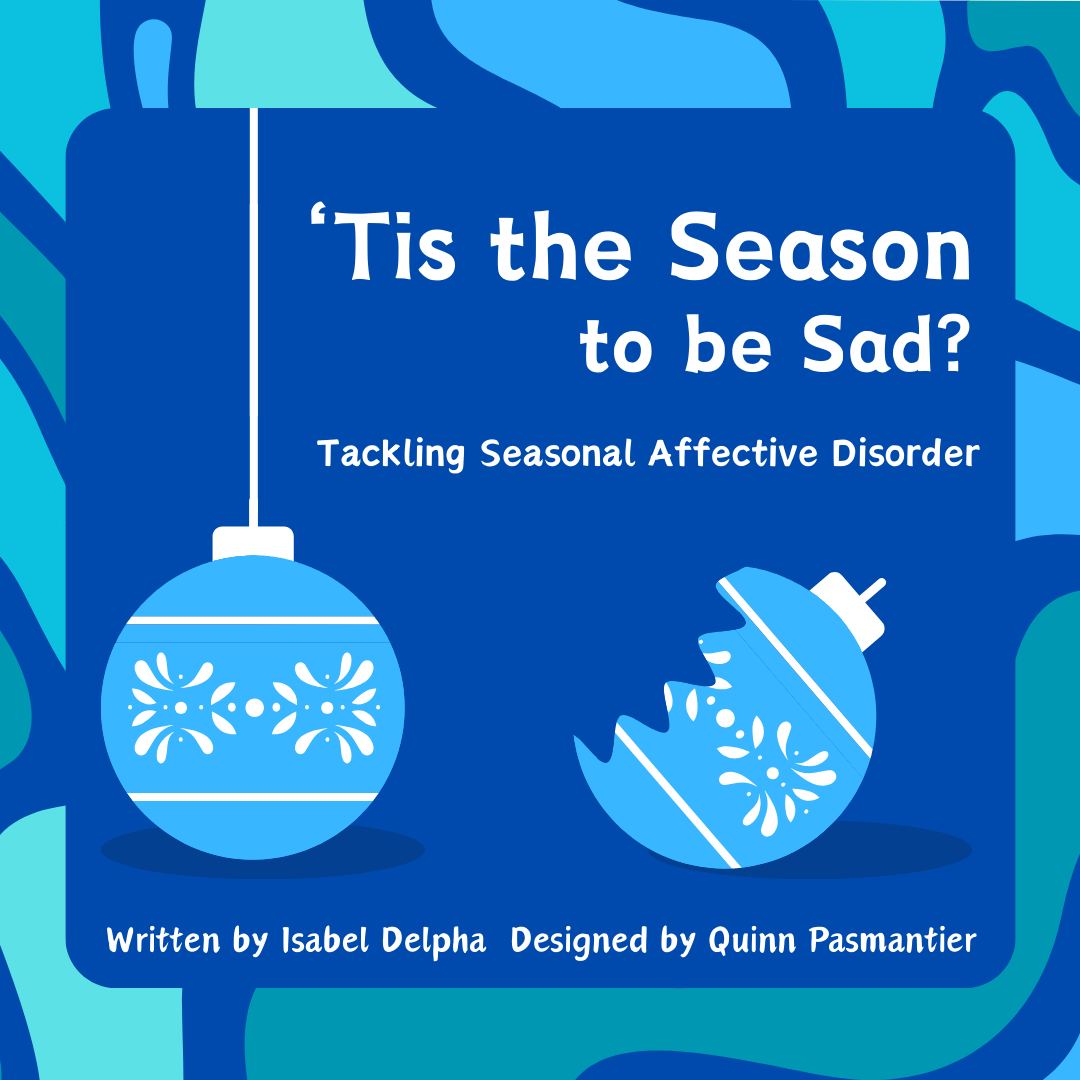
It’s that time of year again: the air is getting colder and even your professors are counting down the days until winter break. Oh, and of course, the sun sets at 4:30 p.m. Shockingly, it’s not these tangible changes to my surroundings that remind me that the seasons are changing. Rather, it’s that feeling of dread simmering in my stomach as I fight my way out of bed each morning. It’s the weight of the world on my eyelids in the class that I used to find interesting. It’s the way that the negative thoughts that melted away under the summer sun suddenly seem to have taken permanent residence in my brain. At first, I thought maybe these symptoms were just a series of bad days, or some kind of fluke. But over the years, I’ve noticed that they really only persist between the months of November and March, when the air is at its coldest and the sky is at its darkest. I recently learned that this is a sign of seasonal depression.
Seasonal depression, also known as seasonal affective disorder, or SAD, is quite common in areas where sunlight wanes seasonally. About 10 to 20% of Americans experience SAD in its milder form, known as “the winter blues.” Still, approximately 5% of U.S. adults experience the full effects of seasonal affective disorder, which is categorized by the American Psychiatric Association as a major depressive disorder with seasonal patterns. Needless to say, SAD affects a lot of people in one form or another every year. That’s why this year, instead of wallowing in my own “winter blues” and contemplating going into hibernation until spring, I decided to learn more about seasonal affective disorder and how it can be treated. While there’s no known cure to this condition, I’ll be listing a few treatment methods that people swear by.
Though experts aren’t certain about what exactly causes seasonal depression, there is a strong correlation between shortened daylight and symptoms of SAD. After all, the vast majority of people who struggle with SAD do so in the fall and winter (though there is a rare form of the condition in which symptoms are experienced in the spring and summer). Because of this, one of the best ways to combat seasonal depression is by maximizing exposure to light. There are special light therapy lamps made for this purpose. These are reportedly very effective when used regularly throughout the fall and winter. But while this is a great potential solution for treatment, those of us with milder forms of SAD may just wish to increase our light exposure by natural methods. This can be done by setting aside time to spend outdoors — properly bundled up, of course — or simply sitting by a sunny window for a while. One of my favorite ways to find sunlight is to go for long walks around Boston, especially along the Charles River or in the Emerald Necklace parks. If you dress warmly and walk quickly enough, the cold is tolerable!
Even if you prioritize sunlight exposure, you still might be lacking sufficient vitamin D. One way to make up for this is with a vitamin D supplement. You can find them pretty much anywhere you would normally find vitamins. Personally, I’ve implemented taking this supplement into my morning routine for about a month now. It definitely hasn’t made my winter blues disappear completely, but I have noticed some improvements in my mood since I started taking vitamin D pills. So while this isn’t a surefire cure, taking one vitamin a day seems worth a shot if it might offer any relief.
Seasonal depression can also be treated in much the same way as regular depression. This can be through antidepressants and therapy, and there’s absolutely no shame in seeking out these solutions if you feel they might help you. And remember, Northeastern offers a number of mental health services to students for free, such as unlimited counseling sessions and online resources like SilverCloud and Headspace.
The final strategy I will offer might be the most obvious, but it’s worth mentioning. Generally seeking out the things that boost your mood can help make dealing with seasonal depression easier. For me, that looks like hanging out with my friends, FaceTiming my family, exercising and listening to my favorite songs. Other ideas include keeping a journal, going for walks, rewatching a comfort movie or even just taking a nap when you need it. I won’t lie: these things probably won’t just make your winter blues disappear, but they can brighten your day more than you would think, or at the very least provide a momentary distraction.
Ultimately, there is no quick fix to seasonal affective disorder, and it’s probably only worsened by Northeastern’s workload and Boston’s climate. But it’s important to remember to take care of yourself as best you can, even when seasonal depression makes it hard. So get some sleep, eat a hearty meal or talk to a friend. Most importantly, though, remember that you are not dealing with this alone.